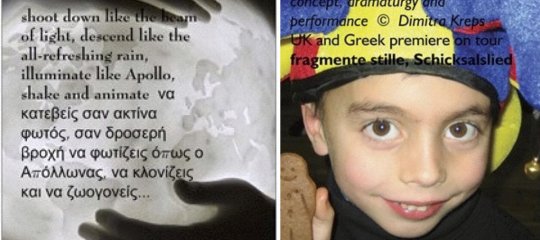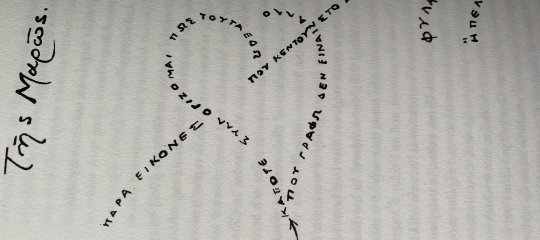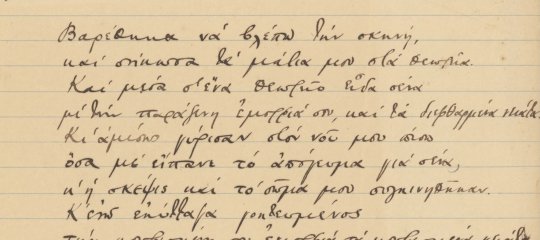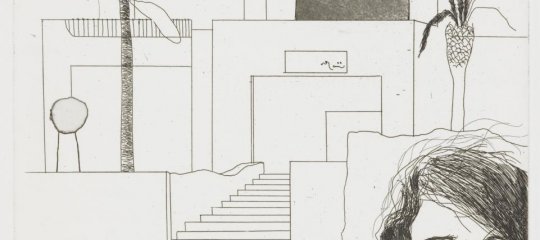Διαγωνισμός μετάφρασης
Εθνικό Πανεπιστήμιο ΚιέβουΑξιότιμοι συνάδελφοι!
Σας πληροφορούμε ότι το Κέντρο ελληνικών σπουδών μαζί με τη Διεθνή Εταιρεία Φίλων Νίκου Καζαντζάκη διοργανώνει διαγωνισμό για την καλύτερη λογοτεχνική μετάφραση ενός αποσπάσματος από τα μυθιστορήματα του διασήμου αυτού Έλληνα συγγραφέα. Καλείται η συμμετοχή των φοιτητών με προχωρημένο επίπεδο ελληνομάθειας που σπούδαζαν τα ελληνικά όχι λιγότερο από τρία χρόνια στα ανώτερα εκπαιδευτικά ιδρύματα όπου διδάσκονται τα ελληνικά. Παρακαλούμε πολύ το προσωπικό των εδρών και ιδρυμάτων ελληνικών σπουδών να συμβάλει στη διεξαγωγή του διαγωνισμού με έγκαιρη πληροφόρηση του φοιτητικού κοινού.
Το χρονικό διάστημα μέσα στο οποίο θα διεξαχθεί ο διαγωνισμός ξεκινά στις 15 Σεπτεμβρίου 2003 και λήγει στις 15 Ιανουαρίου 2004. Οι μεταφράσεις, σταλμένες μετά από την ημερομηνία αυτή, δε θα εξεταστούν. Η γλώσσα της μετάφρασης— λογοτεχνικά ουκρανικά. Το έργο που επιλέχτηκε για μετάφραση— «Τελευταίος Πειρασμός», κειμενική έκταση της μετάφρασης— 20-25 σελίδες. Σε περίπτωση έλλειψης του κειμένου στους υποψηφίους, μπορούμε να το στείλουμε σε σας είτε φωτοτυπημένο είτε σε ηλεκτρονική μορφή μέσω Internet. Οι απεσταλμένες μεταφράσεις θα εξεταστούν από εξειδικευμένη επιτροπή που αποτελείται από τα μέλη του ουκρανικού τμήματος της Διεθνούς Εταιρείας Φίλων Νίκου Καζαντζάκη : καθ. Κλιμένκο Ν.Φ. (Κίεβο), καθ. Πονομαρίβ Ο.Δ. (Κίεβο), συντονίστρια εκπαίδευσης της Πρεσβείας Ελληνικής Δημοκρατίας στο Κίεβο, κα. Μπάτζιου Γ., υφ. Γλούστσενκο Λ.Μ. (Λβίβ), συντάκτη του ενημερωτικού δελτίου «Ζορμπάς» κ. Φεοντόσγιεβ Σ. (Ντουναγίβτσι), επικεφαλή του ουκρανικού τμήματος της Διεθνούς Εταιρείας Φίλων Νίκου Καζαντζάκη κ. Σαβένκο Α.Ο. (Κίεβο).
Οι απαιτήσεις στην τακτοποίηση της μετάφρασης: πληκτρολόγηση του κειμένου στο Word 6/7, με ενάμισι διάστημα, γραμματοσειρά— Times New Roman, μέγεθος της γραμματοσειράς— 14. Να στέλνετε τα κείμενα σας σε εκτυπωμένη μορφή και σε δισκέτα στη διεύθυνση του Κέντρου ελληνικών σπουδών και ελληνικού πολιτισμού που βρίσκεται κάτωθεν. Επίσης Σας παρακαλούμε να ξαναστείλετε το κείμενο με e-mail στο κέντρο
Οι πρώτες τρεις καλύτερες εργασίες θα διακριθούν και θα βραβευτούν. Η μετάφραση που θα κατέχει πρώτη θέση θα δημοσιευτεί στα Πρακτικά του ΙΙ-ου διεθνούς Συμποσίου «Νίκος Καζαντζάκης και Ουκρανία».
Με εκτίμηση
o επικεφαλής του ουκρανικού τμήματος
της Διεθνούς Εταιρείας
Φίλων Νίκου Καζαντζάκη
ΕΘΝΙΚΟ ΠΑΝΕΠΙΣΤΗΜΙΟ ΚΙΕΒΟΥ
ΤΑΡΑΣ ΣΕΒΤΣΕΝΚΟ
ΚΕΝΤΡΟ ΕΛΛΗΝΙΚΩΝ ΜΕΛΕΤΩΝ
ΚΑΙ ΕΛΛΗΝΙΚΟΥ ΠΟΛΙΤΙΣΜΟΥ
«ΑΝΔΡΕΑΣ ΜΠΙΛΕΤΣΚΥ» 64, VOLODYMYRSKA ST., KYIV, 01017
UKRAINEΤ. (044) 2210248
КИЇВСЬКИЙ НАЦІОНАЛЬНИЙ УНІВЕРСИТЕТ
ІМЕНІ ТАРАСА ШЕВЧЕНКА
ЦЕНТР ЕЛЛІНІСТИЧНИХ СТУДІЙ І ГРЕЦЬКОЇ
КУЛЬТУРИАНДРІЯ БІЛЕЦЬКОГО
УКРАЇНА, 01017, КИЇВ
ВУЛ.ВОЛОДИМИРСЬКА, 64
ТЕЛ. 0038/044/2210248Γνωστοποιήθηκε στο Κέντρο Ελληνικής Γλώσσας στις 9 Σεπτεμβρίου 2003










